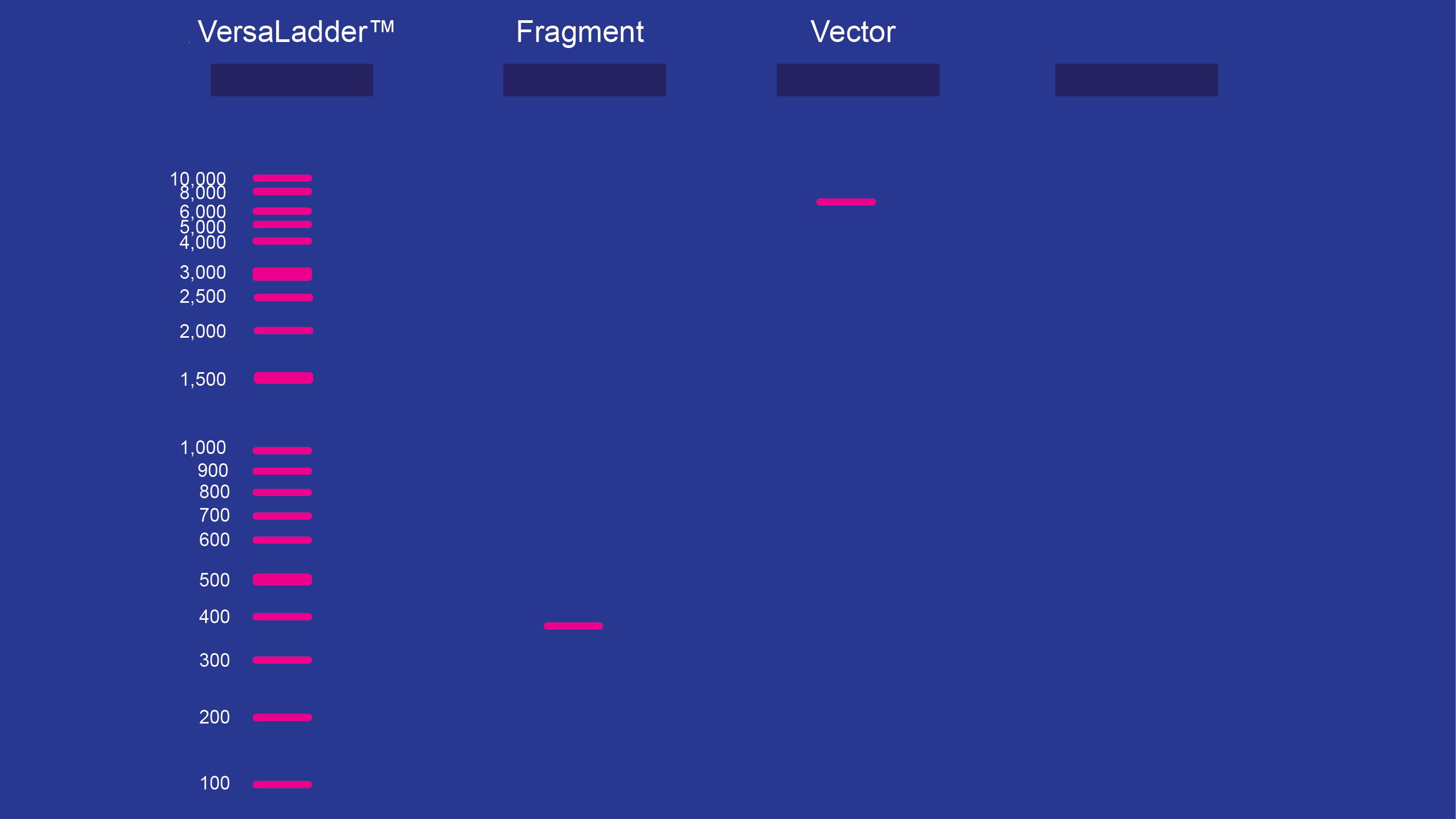How to Choose a GoldBio DNA Ladder
by Katharine Martin

by Katharine Martin
Without a DNA ladder, it wouldn’t be possible to accurately analyze your DNA samples. DNA ladders contain standard-sized fragments of DNA. Because their molecular weights are known, researchers can quickly compare their samples with the DNA ladder in the same gel to determine their sample’s approximate molecular weight, or identify which sample within the gel is one of interest.
Choosing a DNA ladder is not terribly challenging, but with a lot of options out there and different features, it can take a little bit of time to find what you want.
In this article we will quickly break down the different types of GoldBio DNA ladders and help you easily determine which one is right for your project.
GoldBio’s popular ready-to-use ladders are offered in:
GoldBio’s PLUSTM series are also ready-to-use ladders with the benefit of a much wider size range.
The increased size range makes this series of ladders a great choice when working with multiple, wide-ranging samples. In this case, if you had sample that was approximately 175 bases, and one that was approximately 2500 bases, the 100 bp PLUSTM ladder would work for either, whereas the standard 100 bp ladder (in the previous section) would only work for the first sample.

Figure 1. Illustrates the range of the 100 bp PLUS DNA ladder. Here a sample that is 175 bases can be ran in the same gel and compared to the same ladder with a sample that is 2,500 bases
While using a single DNA ladder in the PLUS series is ideal if, for example, you had a 350 bp sample, a 5,000 bp sample and a 20,000 bp sample, it is important to consider the ranges between each point. The 1 kb PLUSTM DNA ladder is composed of 14 fragments. For the smaller molecular weight regions, the range between two points is 250 bases. This could be a little problematic if you’re accurately trying to analyze a sample that is, for example, somewhere between 290-350 bases.
If you need a more accurate look at the size, it’s better to choose one of the standard ladders ranging closer to the approximate size of your sample, or consider using the VersaLadderTM.
Figure 2. This illustration shows the wide range of the 1 kb PLUS DNA ladder. However, if you look closely at lane 2, you might question the size of the band. Is it 350 bases? 375 bases? 400 bases? While the 1 kb PLUS ladder is excellent for quick visualization, if you need accurate measurements, it's best to use one of the standard ladders that is closest to your sample's size, or to use the VersaLadder.
The VersaLadderTM has many advantages making it suitable for several different scenarios.
The VersaLadderTM has 19 fragments ranging between 100 bp - 10 kb, with reference points at 1.5 kb and 3 kb.
This ladder is a great choice if you’re working with samples that vary widely in size. It’s also an excellent ladder when cloning multiple small fragments into a single vector. With the VersaLadderTM you can visualize all the different, small-sized fragments along with a large vector within the same gel.

Figure 3. Illustrates two advantages of the VersaLadder. First, you can visualize and analyze both your small fragments and your vector. Second, the range between two points, especially in the small molecular weight regions is smaller, allowing for more accurate band measurements.
One of the other advantages to the VersaLadderTM that sets it apart from the 1 kb PLUSTM, for example, is that 19 fragments means there is more coverage between each point. To clarify better, within the smaller molecular weight regions the VersaLadderTM has points at every 100 bases. The 1 kb PLUSTM, on the other hand, points for 250 bases within the smaller molecular weight regions. Therefore, if you’re needing a more accurate analysis of your gel along with great versatility, the VersaLadderTM is more capable.
GoldBio has other resources to help you choose the right ladder for your project. You can check out the GoldBio DNA Ladders at a Glance chart for a quick visual comparison. And GoldBio’s DNA Ladder Comparision Sheet helps you quickly look at each ladder to compare the fragments and determine the best option for yourself.

Ni2+ ions give nickel agarose beads their characteristic blue color. This blue color can fade or disappear completely when loading his-tagged proteins onto the column....

Nickel agarose beads change from blue to a brown or black color when the nickel ions have been reduced from a Ni2+ to a Ni1+...

The GoldBio Floating Tube Rack is one of our more clever giveaways because of the unique purpose it serves. And, with it also being one...

The characteristic blue color of nickel agarose beads comes from the 2+ oxidation state of the nickel ions. Color is also a useful indicator for...
